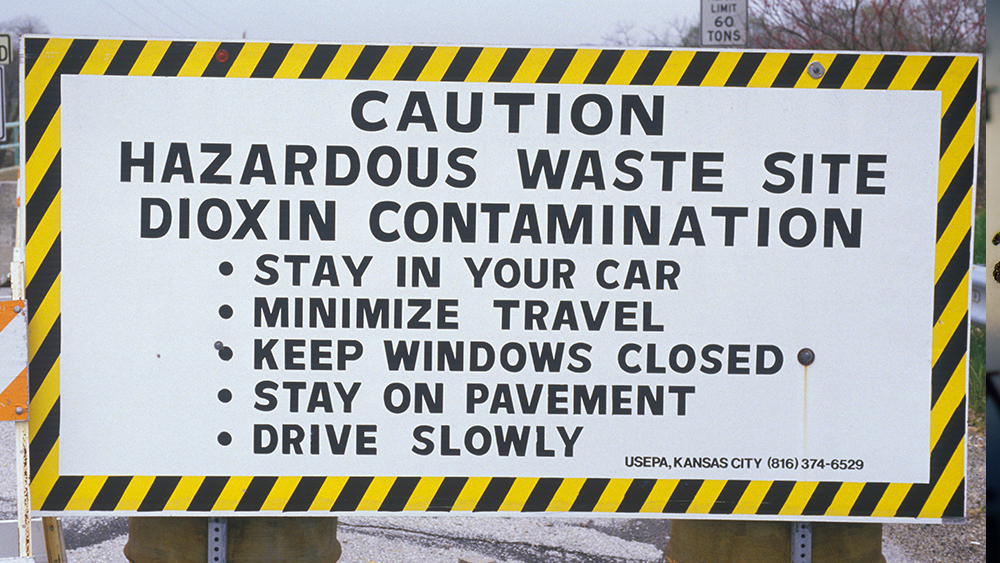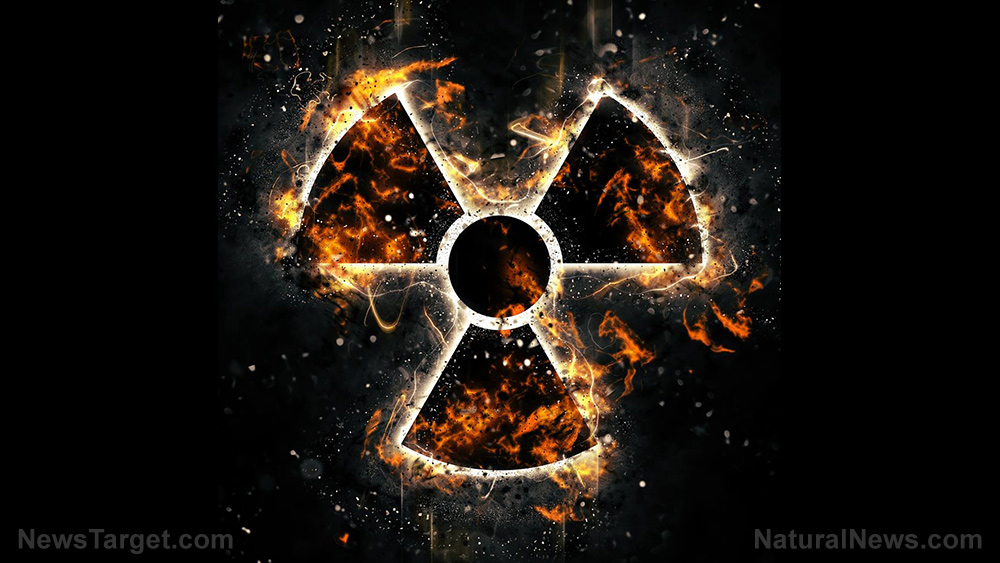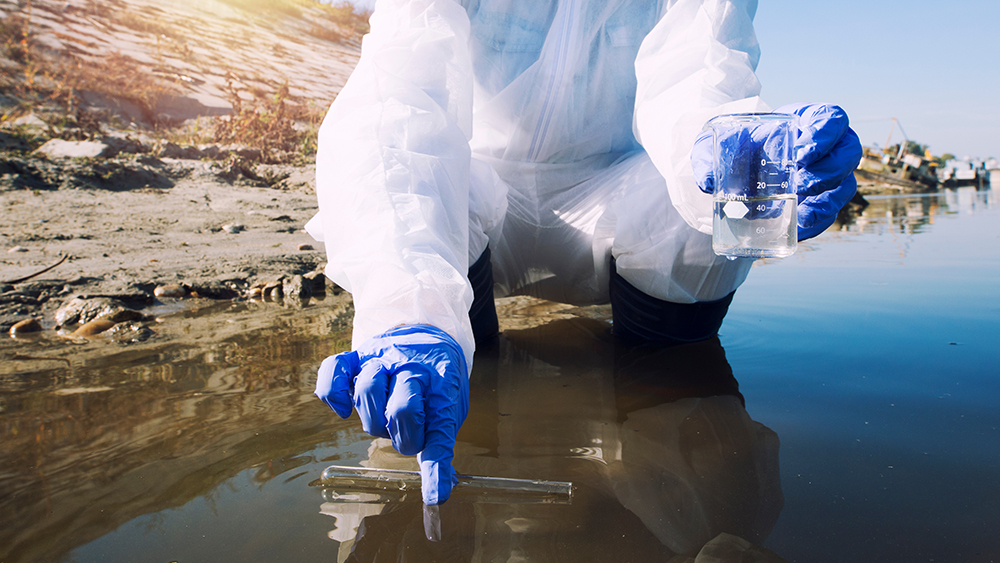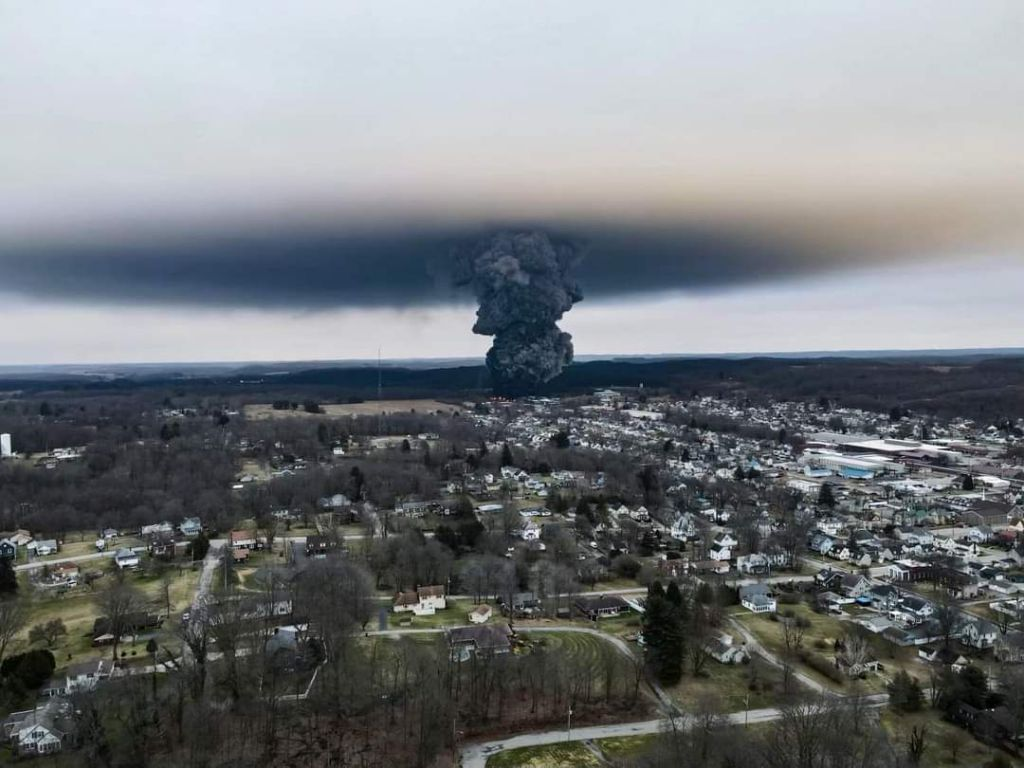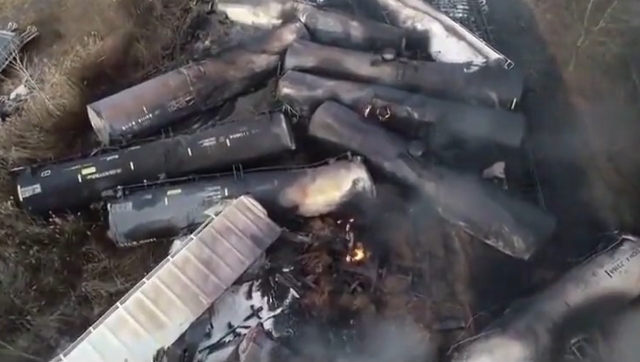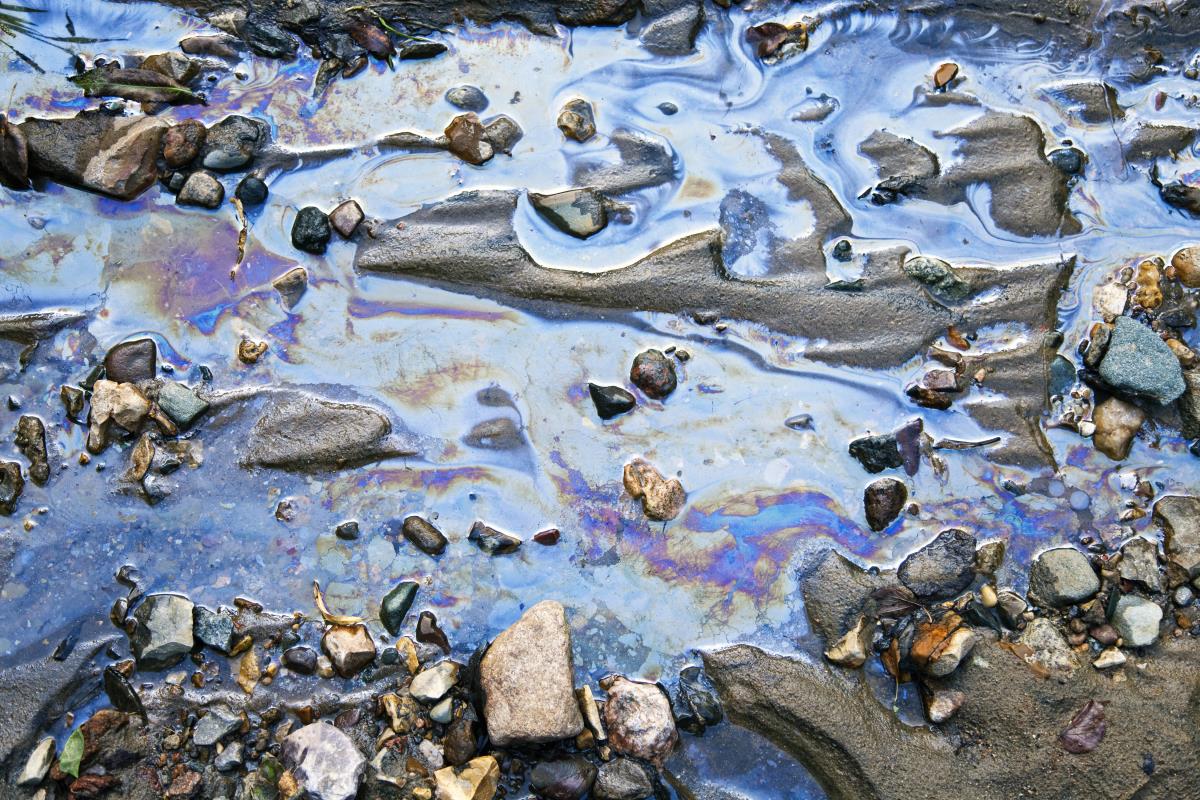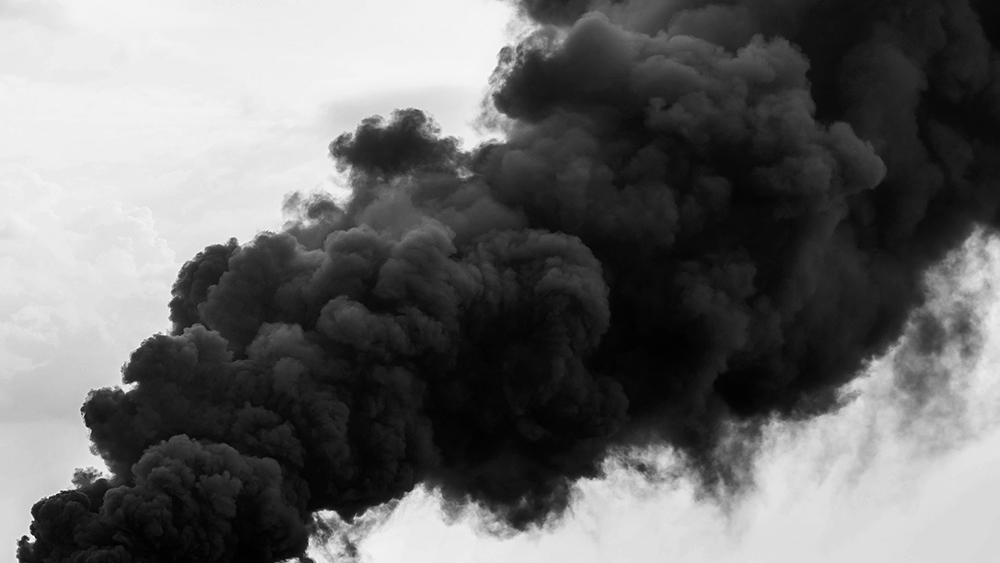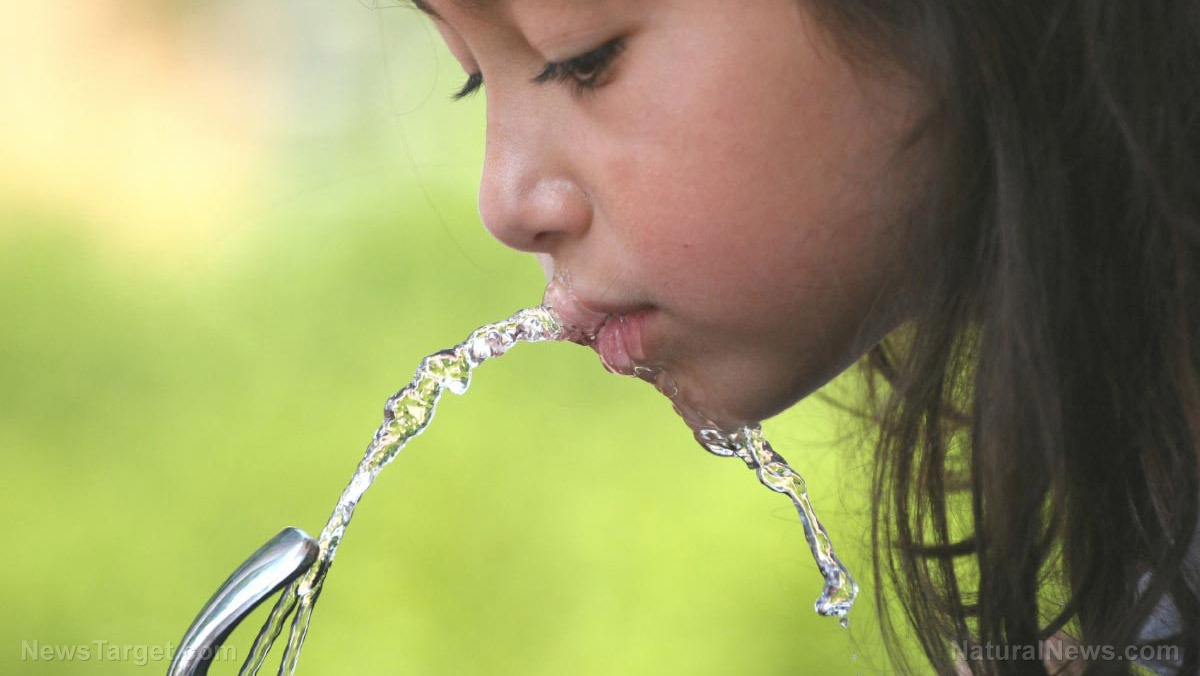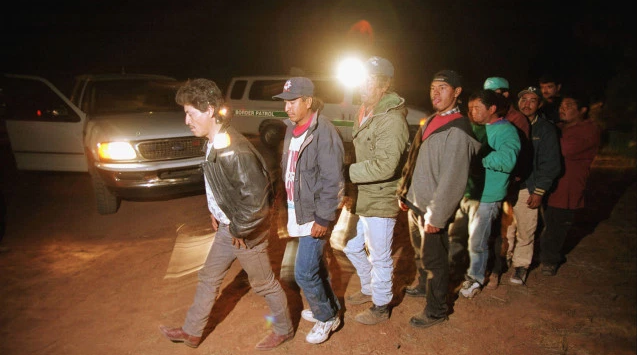Which foods contain the highest levels of dioxins and how do they get into the food supply?
02/24/2023 / By Lance D Johnson
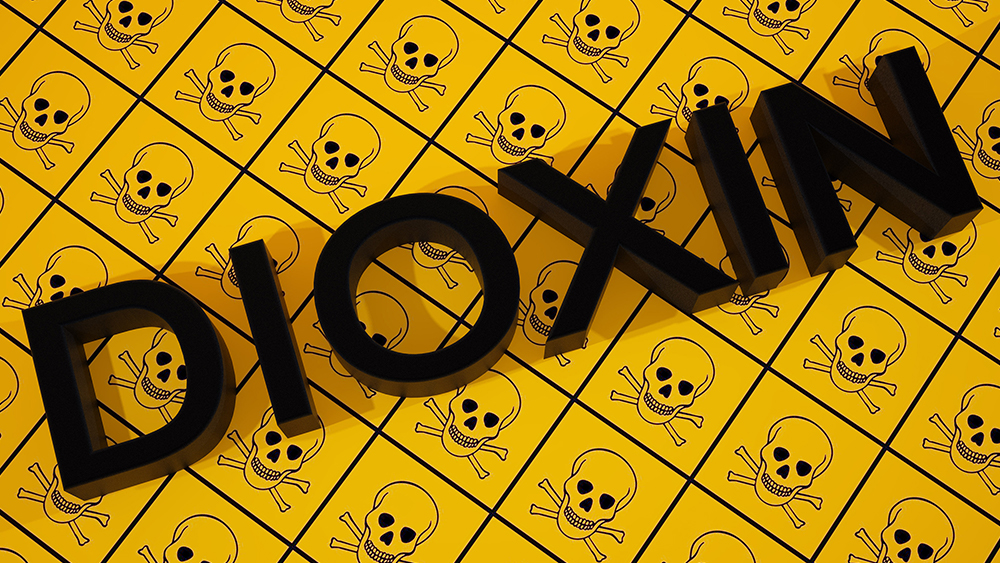
Industrial processes that involve chlorine and hydrocarbons spontaneously create a class of chemical byproducts called dioxins. The most toxic byproduct – the standard bearer for dioxin toxicity – is 2,3,7,8-tetrachlorodibenzo-p-dioxin (TCDD).
The dioxin disaster in East Palestine, Ohio has shed light on one of the most persistent cancer-causing toxins in our environment and food supply. More people are asking: What are dioxins? Where do they come from? Which foods contain the highest levels?
Dioxins have been slowly infiltrating the environment and food supply for decades
Dioxins come primarily from pulp and paper bleaching, from herbicide and pesticide manufacturing, from the production of polyvinyl chloride (PVC) plastics, and from waste incineration, house fires, and trash burns. For instance, the intentional burning of 1.1 million pounds of vinyl chloride (a chlorinated compound) in East Palestine, Ohio, unleashed a catastrophic quantity of dioxins into the environment.
There is no safe level for dioxin exposure, but these chemicals have been slowly infiltrating the environment and the food supply for decades. A 1994 EPA report found dioxin levels in the general US population that are “at or near levels associated with adverse health effects.”
Dioxins cause immunosuppression
Dioxins are one of the main chemicals behind immunosuppression in humans. They are creating the conditions in the body for reoccurring sickness, hormonal problems, cancer, and other diseases. Dioxin toxicity has long been revered; these chemicals were once the primary poisonous component used in Agent Orange. Dioxin contamination led to the complete evacuation of Seveso, Italy and was the reason why Times Beach, MO became a ghost town. The International Agency for Research on Cancer (IARC) placed TCDD in the Group 1 carcinogen category, meaning it’s a known human carcinogen. In fact, the scientific literature classifies TCDD as a mutagen, capable of damaging DNA and affecting the DNA of unexposed descendants.
Foods with the highest level of dioxins include milk, beef, and farmed fish
Dioxins are fat soluble and are therefore able to make their way up the food chain with ease. Most dioxin exposure comes from meat and dairy products. Nearly a quarter of all dioxin consumption (23%) comes from milk and dairy products. Other tops sources include beef, pork, poultry, fish, and eggs. Farmed, freshwater fish accumulate a heavy dose of dioxins. In lactating mothers, the dioxins ultimately permeate her breast milk, exposing the developing infant.
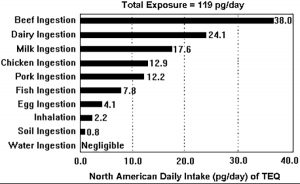
Free range farming introduces dioxins into food supply
Dioxins and PCBs enter the food chain orally. When free range farm animals ingest roughage, water, soil, worms, and insects, they inevitably take in the dioxins in the environment. Compound feed and feed supplements also introduce dioxins to the animals, but to a lesser extent. A German study found that compound feed was significantly less contaminated with dioxins than roughage and succulent feed.
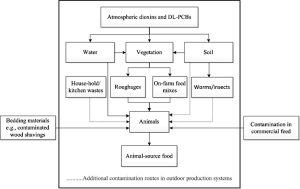
Vegan diet most protective against dioxin exposure
A May 2001 study investigated dioxins in foods and compared diets. The vegan diet was the safest. “The category with the lowest [dioxin] level was a simulated vegan diet…” the study concluded. “Blood dioxin levels in pure vegans have also been found to be very low in comparison with the general population, indicating a lower contribution of these foods to human dioxin body burden.”
Additionally, a plant-based diet has a higher likelihood of blocking the toxic effects of dioxins in the body. Once inside the body, dioxins transform the aryl hydrocarbon receptor (AhR). This allows the dioxins to bind and disrupt cell cycles, interfering with hormones and DNA. Studies show that pigments in green tea leaves, (Camellia sinensis) chlorophyll, and the theaflavins in black tea suppress the transformation of the aryl hydrocarbon receptor, protecting the cells from dioxin’s toxic effects. This protective effect pushes more of the dioxins out of the body before the majority get stored in the fatty tissue.
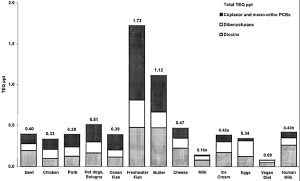
Sources include:
EJNet.org [PDF]
Submit a correction >>
Tagged Under:
agriculture, Animal Feed, chlorine byproducts, chlorophyll, clean food watch, dairy products, dioxins, ecology, environment, food supply, frankenfood, grass-fed beef, grocery, immunosuppression, mutagen, products, stop eating poison, stop eating toxins, TCDD, toxic chemicals, vegan diet
This article may contain statements that reflect the opinion of the author
RECENT NEWS & ARTICLES
COPYRIGHT © 2019 Dangerous.News
All content posted on this site is protected under Free Speech. Dangerous.News is not responsible for content written by contributing authors. The information on this site is provided for educational and entertainment purposes only. It is not intended as a substitute for professional advice of any kind. Dangerous.News assumes no responsibility for the use or misuse of this material. All trademarks, registered trademarks and service marks mentioned on this site are the property of their respective owners.

